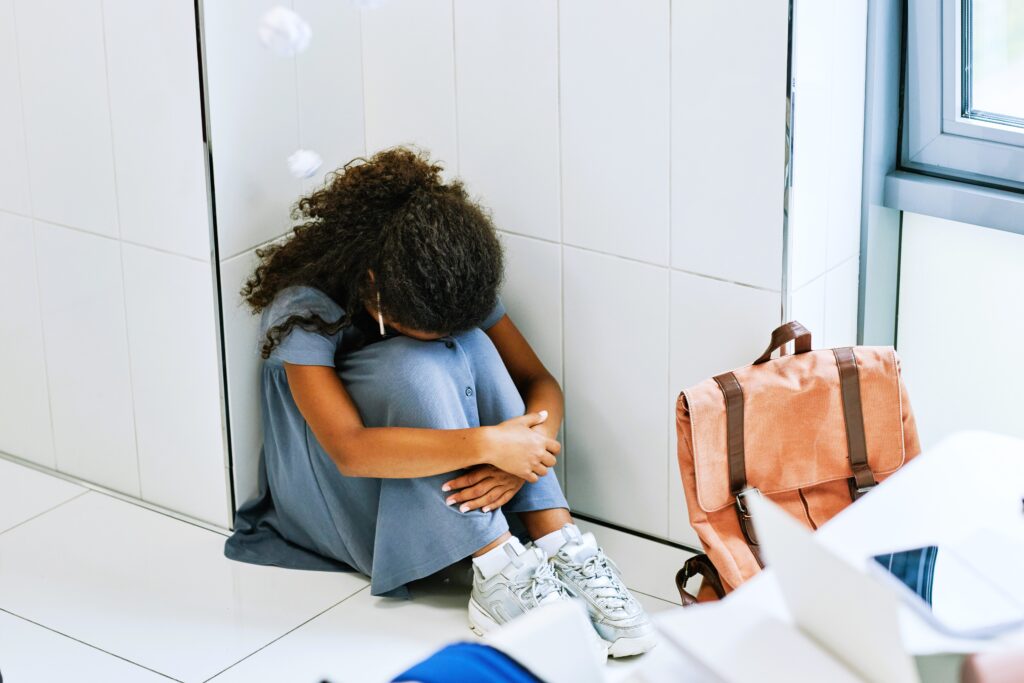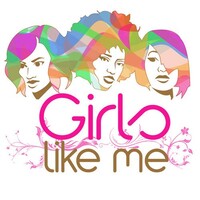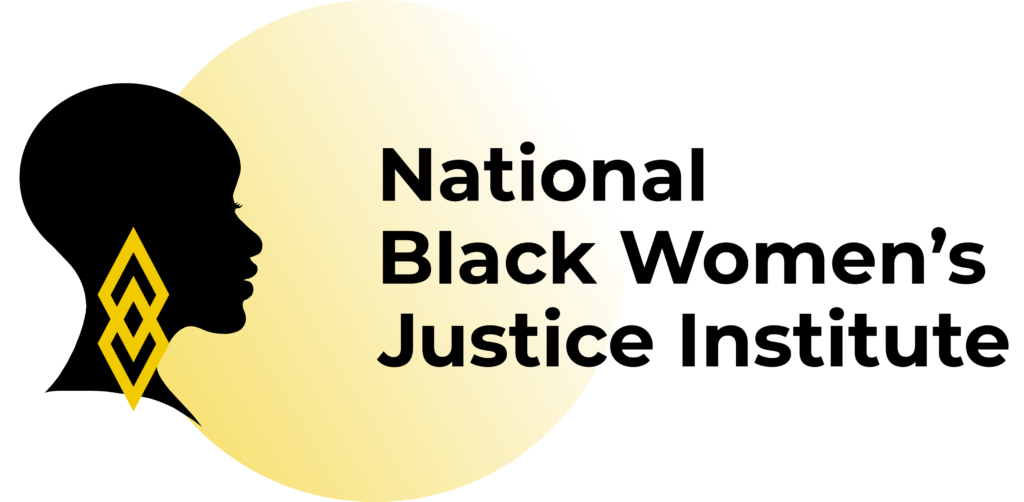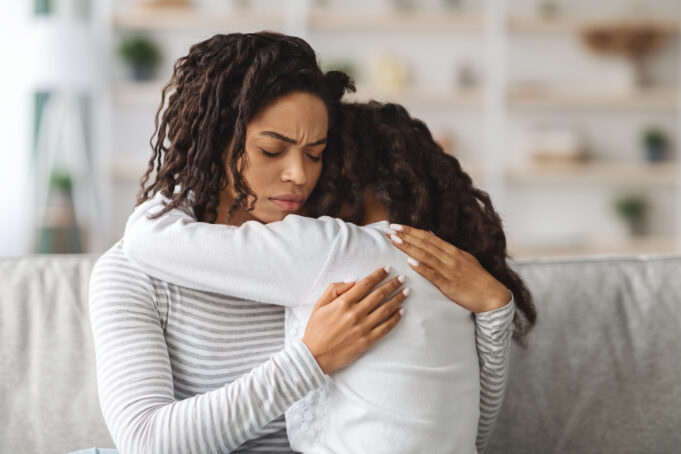On any given day of the week, Black girls of all ages can be found arguing and fighting on popular TV shows, social media and on websites that glorify such behavior. They are shot, sucker punched, beaten up, dragged across the floor, bloodied and bruised for all to see.
Much of this stems from the pervasiveness of stereotypes and stigmas that are perpetuated in the media, like standards of beauty that don’t celebrate Black girls, that actually devalue Black girls and tell them that they’re not beautiful, explained LaKeisha Grey-Sewell, founder and executive director of Girls Like Me. “These unrealistic standards of beauty impact their self-esteem.”
“There’s a proliferation of violence with Black girls as the victims,” Ms. Grey-Sewell continued. “Whether that’s on Grand Theft Auto or any of the other video games played, or on TikTok, Black girls are the victims of murder, shooting, rape and more. We also see the influx of music that consistently talks about raping and shooting Black girls. This misogyny, this racial insensitivity, this racial erasure trickles down and impacts the psyche of our Black girls,” she added.
This cultural norm of violence against Black girls leads to the growing numbers of adolescent girls faced with record-high levels of violence, sadness, and suicide risk, according to new Centers for Disease Control and Prevention (CDC) data from a nationwide survey. Nearly three in five (57 percent) U.S. teen girls felt persistently sad or hopeless in 2021—double that of boys, representing a nearly 60 percent increase and the highest level reported over the past decade. While all teens reported increasing mental health challenges, experiences of violence, and suicidal thoughts and behaviors, girls fared worse than boys across nearly all measures.

Young Black girl bullied in school and sitting on floor with headphones. Many of the attacks and fights girls experience happen at school, according to a recent report. Photo: Envato
“These data show a distressing picture. America’s teen girls are engulfed in a growing wave of sadness, violence, and trauma,” Debra Houry, chief medical officer for the CDC, said in a media briefing in February. She explained that over the past decade, teen girls have experienced dramatic increases in violence, poor mental health and suicide risk.
The National Youth Risk Behavior Survey—performed every two years—gathered responses from more than 17,000 students from 152 schools in the country who filled out the survey in the fall of 2021. The survey asked about topics such as violence, personal safety, physical activity, sexual behavior, nutrition, mental health, and use of tobacco, drugs, and alcohol.
The survey found that youth mental health has continued to worsen—with significant increases in widespread reports of harmful experiences among teen girls:
Experiences of violence, including sexual violence, are not declining and in some cases are increasing.
More than one in 10 (14 percent) had ever been forced to have sex—up 27 percent since 2019 and the first increase since CDC began monitoring this measure.

“Although we have seen worsening trends and mental health for young people over the last 10 years, the levels of poor mental health and suicidal thoughts and behaviors reported by teenage girls are now higher than we have ever seen,” Dr. Kathleen Ethier, director of the CDC’s Division of Adolescent and School Health, told reporters at the briefing.
“When we’re looking at experiences of violence, girls are experiencing almost every type of violence more than boys,” she said.
Girls Like Me, headquartered in Chicago, is dedicated to elevating the bar on raising healthy and liberated Black girls. Ms. Grey-Sewell is an award-winning girls’ advocate.
“We’ve seen these growing levels of violence since we started 10 years ago,” she said. “We see it with everyone. I see it with our parents. I see it with myself. We all have to combat and deconstruct these stories that are told about ourselves. We all have to consistently fight against being told we’re not beautiful and not feeling beautiful. When you don’t feel beautiful, when you don’t feel valued, when you don’t feel worthy or have a place, then you lash out. Sometimes you self-destruct.
“We see adult women who say after work every day, ‘I need a glass of wine.’ I need something to numb me. We don’t take that as being depressed. But when you need an outside stimulant to either numb your feelings then that says something is wrong. We’re modeling this as adult women. We’re modeling the whole shady experience and confronting things we see on reality TV. That’s a model that our girls are following. We can’t be surprised when they emulate what they’re seeing.”

The CDC’s report data on experiences of violence by racial and ethnic groups show that Black and Latino students were more likely to stay home from school because of safety concerns. Even getting to school either walking, the bus or train can lead to violent encounters. For many youth, there is violence in their communities and schools.
Licensed Clinical Social Worker Petrina Williams works with families and teens in her practice Miracles in Motion. She explained that parents send their children out in the world with an expectation of safety. That is shattered when unexpected violence happens. “How do we help children and families feel safe? How do we help them overcome the sadness?” she asked The Final Call.
“It’s one day at a time getting through what happens,” she said. “It’s not so much focusing on getting past it but just getting through the day. It’s about getting through the feelings, identifying what the symptoms are and addressing each of those symptoms with coping strategies,” said Ms. Williams.

According to the National Black Women’s Justice Institute, Black girls report higher rates of sexual harassment, both in school and out of school, than any other group. For girls, sexual harassment can lead to elevated risk of self-harm, suicidal thoughts, feeling unsafe at school, and more, the institute reported.
For more than 25 years, Sudan Muhammad has served women and girls in the worst parts of the D.C. area with her Youth Creations Community Outreach program. She explained that fights and suffering start early.
“These girls are so violent. The violence is normalized because it’s backed up by foul language. Many of the young women I work with are strippers,” she told The Final Call. “Some have young children that they take with them to work. The children have tablets to keep them occupied in another room in the strip club. One five-year-old little girl told me ‘My mother is showing me how to pole dance.’ At another location next to a hair salon, they’re also teaching little girls how to pole dance with a smaller pole,” said Ms. Muhammad.
“The little girls that I work with are always fighting,” she continued. “They have foul mouths. The language is so foul because this is the environment they’re in and they don’t see anything wrong with it. When I say fights, I mean violent fights. My organization works with the young and older women who have been sexually assaulted. We go to the hospital with them and help them file charges when necessary.”
The CDC report found there were few consistent patterns of racial and ethnic differences across measures of mental health and suicidal thoughts and behaviors. Large percentages of students across all racial and ethnic groups experienced persistent feelings of sadness or hopelessness during the past year, and the rates are up for all groups from 2011 to 2021.
Many of the attacks and fights girls experience happen at school, according to the report. While the primary goal of schools is academic learning, they also play a critical role in shaping mental, physical, and social growth. More than 95 percent of children and adolescents in the U.S. spend much of their daily lives in school. It is supposed to provide opportunities to shape behaviors and experiences. However, school also has the responsibility to ensure that all learning is done in a safe and supportive school environment.
This sounds good but challenges exist for Black and Latino youth, who experience racism at school. They often feel less connected. School connectedness strategies should be inclusive with an emphasis on reducing health disparities.
The CDC report explained that healthy relationships at school can improve adolescents’ mental health.
“Young people who feel connected in middle school and high school 20 years later have better mental health, are less likely to be perpetrators or victims of violence, are less likely to use substances and are less likely to attempt suicide,” Dr. Kathleen Ethier said. “So school connectedness is a very powerful protective factor.” Dr. Ethier is the division director of CDC’s Division of Adolescent and School Health.
Anna King, president of the National PTA, told reporters at the CDC media briefing, “We suggest that our schools start by educating their staff and their families on what mental health is, what supports are available and how they can access their services.”
The Most Honorable Elijah Muhammad, Eternal Leader of the Nation of Islam, taught on the importance of Black people loving themselves. “One of the gravest handicaps among the so-called Negroes is that there is no love for self, nor love for his or her own kind,” the Messenger wrote in the chapter titled, “First, Love Self,” in His seminal book, “Message To The Black Man in America.”
“This not having love for self is the root cause of hate (dislike), disunity, disagreement, quarreling, betraying, stool pigeons and fighting and killing one another. How can you be loved, if you have no love for self? And your own nation and dislike being a member of your own, then what nation will you trust your love and membership,” He wrote.
For decades His National Representative, the Honorable Minister Louis Farrakhan has warned that Black people are under attack. The plots against Black women and girls are strategic and calculated by a larger global system of White supremacy.
“We are the mothers and fathers of civilization. If you want to take the world down, you attack the female. If you want to bring the world up, you bring up the women. When you want to destroy a race of people, you attack the virtue of the women of that race,” the Minister stated.
This is the first in an occasional series on the violence and sadness experienced by Black girls and women, its impact and solutions. Stay tuned for Part Two: “The Voices of Girls: What Does It Mean to be a Black Girl? Challenges and Opportunities” in a future edition of The Final Call.













